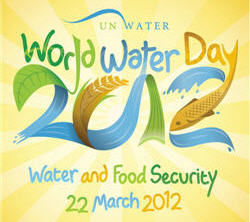Symbios Technologies LLC has received a small business grant from National Science Foundation (NSF) for their latest creation, TPR. The patent-pending Symbios TPR is an innovative approach to eliminating organic pollutants and microorganisms from water by implementing low-power, distributed electrolytic technology.
The National Association of Clean Water Agencies (NACWA), the Water Environment Research Foundation (WERF), and the Water Environment Federation (WEF) have jointly released a document that defines the ever changing environmental, economic, and social roles that clean water utilities are playing in their communities.
EPA Region 7 has approved Missouri's change to state water quality standards rules in order to provide greater flexibility in Missouri's National Pollutant Discharge Elimination System (NPDES) permit program.
GE and Sealed Air’s Diversey business expand their water alliance to the food and beverage industry in India.
TACount has been named the winner of the Water Export Technology Competition. This honor has deemed the company as the most prepared organization for export markets.
InfoZine, the City of Kansas City, Mo., Water Services Department recently issued wastewater revenue bonds at a historically low interest rate of 2.86 percent, which will enable Water Services to perform $75 million in improvements associated with sewer rehabilitation, sewage treatment plants, pump stations, disinfection, sewer force mains, interceptor sewers, storm drainage, and green infrastructure improvements.
Researchers at Texas A&M University are investigating gray water, hoping that the reuse of 'soapy' water can become a statewide interest.
According to research, smart water networks can save utilities around the world approximately $12.5 billion a year.
Petroleum Company of Trinidad & Tobago, Ltd. has teamed with GE to use their water treatment technologies in order to help their refinery at Pointe-a-Pierre produce 3.5 million imperial gallons of water each day.
According to a new study, pesticides currently used in treatment processes for tap water could be to blame for food allergies that afflict 15 million Americans.
An inventor has created a new water distillation system that makes non-potable water drinkable, which makes it a perfect solution during natural disasters like Hurricane Sandy.
Among other things, the settling entities agreed to hire an approved third-party environmental consultant to perform audits at each mobile home park, including examination of the treatment, collection, and drinking water systems.
Opponents have not given up, however. They hope to collect enough signatures to hold a referendum next year.
Marking the 40th anniversary of the Clean Water Act, the EPA administrator is scheduled to speak Oct. 1 at the New Orleans conference.

Companies deploy social media to raise awareness and encourage change in honor of World Water Day, March 22.
The Groundwater Replenishment System expands its capacity to purify wastewater.
EPA recently awarded more than $6.7 million as part of a yearly grant to the Guam Waterworks Authority to improve drinking water and wastewater systems on Guam.
Drinking water taken from a deep aquifer protected by a semi-permeable layer of rock should be protected from many contaminants, including viruses. But viruses have been discovered in many deep Madison, Wis., water wells.
A team of Purdue University researchers has invented a prototype water-disinfection system that could help the world's 800 million people who lack safe drinking water.
Scientists at Kansas State University and seven other collaborating institutions were recently awarded $3.3 million from the National Science Foundation to conduct a-large scale study of how stream organisms influence water quality across North America.